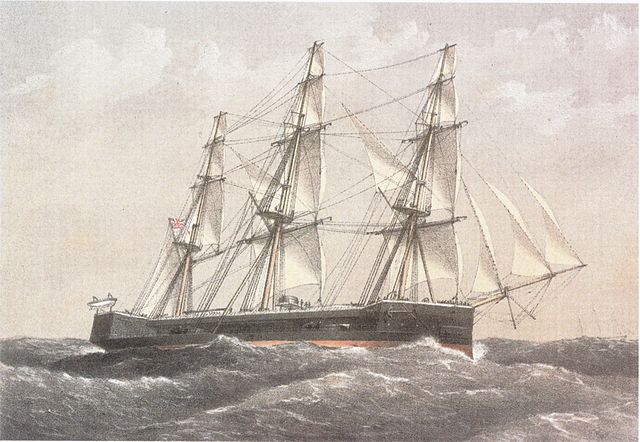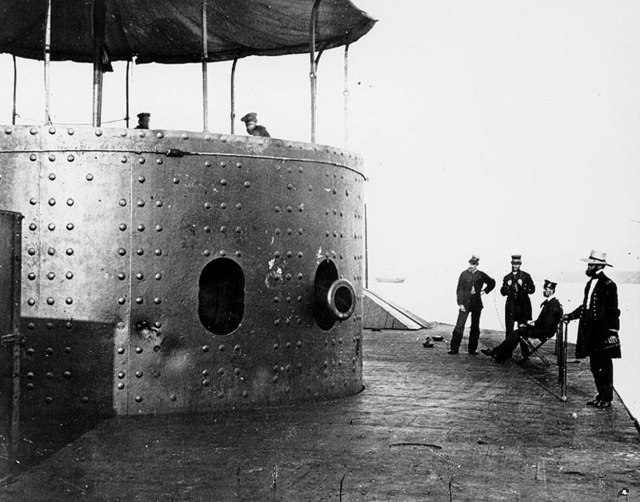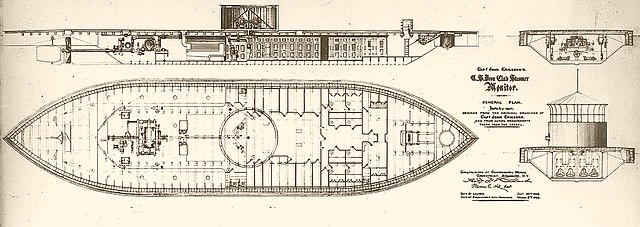HMS Captain was a major warship built for the Royal Navy as a semi-private venture, following a dispute between the designer and the Admiralty. With wrought-iron armour, steam propulsion, and the main battery mounted in rotating armoured turrets, the ship was, at first appearance, quite innovative and formidable. However, poor design and design changes resulted in a vessel that was overweight and ultimately unstable. In terms of seaworthiness she was reported as closely comparable to the higher freeboard turret-ship HMS Monarch, but her reduced freeboard added a sense of "sluggishness". The Captain capsized in heavy seas, only five months after being commissioned, with the loss of nearly 500 lives.
HMS Captain
The Lady Nancy raft was the inspiration of the Captain's design
Minute by Admiral Sir Frederick Grey (First Naval Lord) dated 21 April 1866, suggesting the Admiralty sanction Coles to build a seagoing turret-ship of his own design (from UK National Archives, ADM 1/5974)
Punch, or the London Charivari - political satire cartoon, dated 7 July 1866. The British press regarded the Admiralty as hidebound and prejudicial to Coles
Turret ships were a 19th-century type of warship, the earliest to have their guns mounted in a revolving gun turret, instead of a broadside arrangement.
Turret of USS Monitor, one of the first turret-armed warships
HMS Prince Albert, a pioneering turret ship, built by naval engineer Cowper Phipps Coles.
HMS Captain was one of the first ocean-going turret ships.
Inboard plans of USS Monitor.







